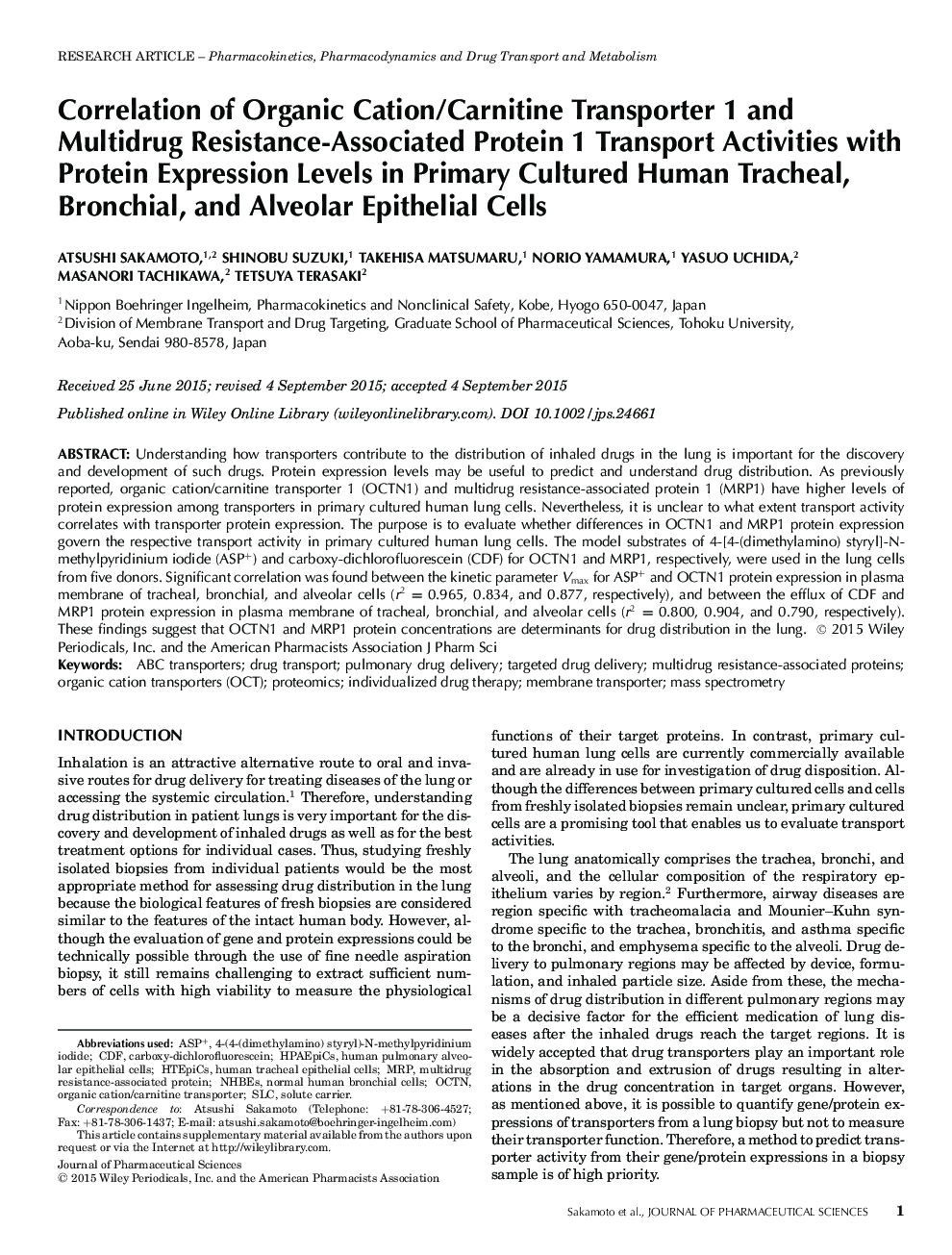| Article ID | Journal | Published Year | Pages | File Type |
|---|---|---|---|---|
| 2484291 | Journal of Pharmaceutical Sciences | 2016 | 8 Pages |
Abstract
Understanding how transporters contribute to the distribution of inhaled drugs in the lung is important for the discovery and development of such drugs. Protein expression levels may be useful to predict and understand drug distribution. As previously reported, organic cation/carnitine transporter 1 (OCTN1) and multidrug resistance-associated protein 1 (MRP1) have higher levels of protein expression among transporters in primary cultured human lung cells. Nevertheless, it is unclear to what extent transport activity correlates with transporter protein expression. The purpose is to evaluate whether differences in OCTN1 and MRP1 protein expression govern the respective transport activity in primary cultured human lung cells. The model substrates of 4-[4-(dimethylamino) styryl]-N-methylpyridinium iodide (ASP+) and carboxy-dichlorofluorescein (CDF) for OCTN1 and MRP1, respectively, were used in the lung cells from five donors. Significant correlation was found between the kinetic parameter Vmax for ASP+ and OCTN1 protein expression in plasma membrane of tracheal, bronchial, and alveolar cells (r2Â = 0.965, 0.834, and 0.877, respectively), and between the efflux of CDF and MRP1 protein expression in plasma membrane of tracheal, bronchial, and alveolar cells (r2Â = 0.800, 0.904, and 0.790, respectively). These findings suggest that OCTN1 and MRP1 protein concentrations are determinants for drug distribution in the lung.
Keywords
CDFSLCMRPASP+OCTNorganic cation transporters (OCT)Pulmonary drug deliverysolute carrierDrug transportABC transportersMembrane transporterTargeted drug deliveryindividualized drug therapyMass spectrometryProteomicsmultidrug resistance-associated proteinmultidrug resistance-associated proteinsorganic cation/carnitine transporter
Related Topics
Health Sciences
Pharmacology, Toxicology and Pharmaceutical Science
Drug Discovery
Authors
Atsushi Sakamoto, Shinobu Suzuki, Takehisa Matsumaru, Norio Yamamura, Yasuo Uchida, Masanori Tachikawa, Tetsuya Terasaki,
